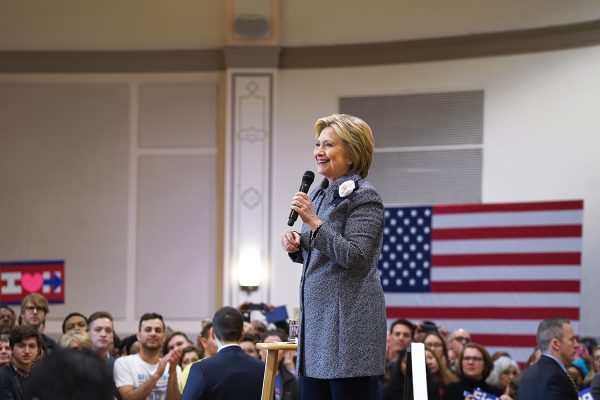
If it wasn’t for Donald Trump, America’s Republicans would have stood a good chance of beating Hillary Clinton in November and returning one of their own to the presidency.
That is according to models that study the election’s “fundamentals”.
There is no total agreement on just what “fundamentals” are, but most political scientists would include economic and job growth, the incumbent’s approval rating and the unlikelihood of a party winning three consecutive presidential terms.
Florian Hollenbach and Jacob Montgomery combined six different models that profess to analyze the election’s fundamentals and found (PDF) that, on average, they give the Republican candidate 50.9 percent support against 49.1 percent for the Democrat.
What the polls actually say
Going by the fundamentals then, Clinton should be struggling.
In reality, she is dominating this year’s contest.
Pollster, a poll average from The Huffington Post, has her at 48.3 percent support against 39.6 percent for Trump. Its trendline has never put Trump ahead.
The RealClearPolitics average, which weighs polls slightly differently, has Clinton at 47 and Trump at 41.2 percent.
Anyone would have done better
Would Republicans have fared better with another candidate?
Probably, writes Dylan Matthews at Vox:
You see this if you compare how [Trump’s] doing to how mainstream Republican candidates like Marco Rubio and John Kasich were polling in the general election. RealClearPolitics‘ last average in early March put Rubio up 4 points over Clinton. Kasich versus Clinton was a veritable bloodbath, with Kasich an astonishing 7.4 points up as of late April.
Indeed, argues Matthews, a mainstream Republican candidate like Kasich or Rubio would more likely have outperformed the fundamentals, given Clinton’s own unpopularity. If it weren’t for Trump’s presence in the race, he writes, “she would be the least popular major party presidential candidate since the advent of polling.”
None of the above
The theory behind fundamentals, as Nate Silver explains at FiveThirtyEight, is that economic conditions usually prevail because most other factors are fought to a draw.
In a normal presidential election, both candidates raise essentially unlimited money and staff their campaigns with hundreds of experienced professionals. In a normal presidential election, both candidates are good representatives of their party’s traditional values and therefore unite almost all their party’s voters behind them. In a normal presidential election, both candidates have years of experience running for office and deftly pivot away from controversies to exploit their opponents’ weaknesses. In a normal presidential election, both candidates target a broad enough range of demographic groups to have a viable chance of reaching 51 percent of the vote.
None of those things are true about Trump.
And the worst thing, for a mainstream, center-right Republican, is that this was obvious from the start of Trump’s candidacy and the party went ahead and nominated him anyway.
